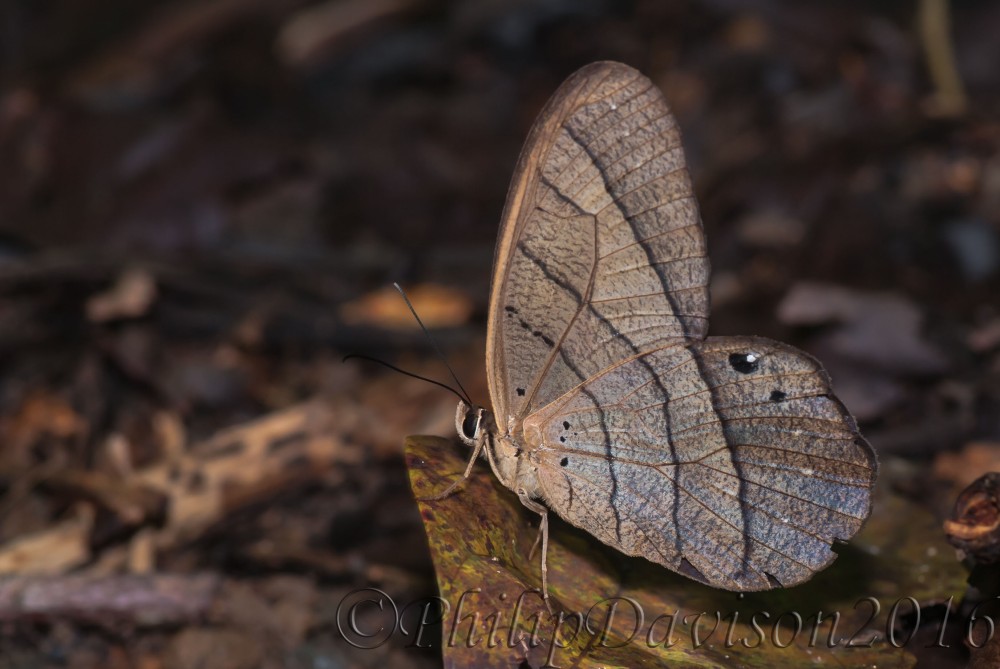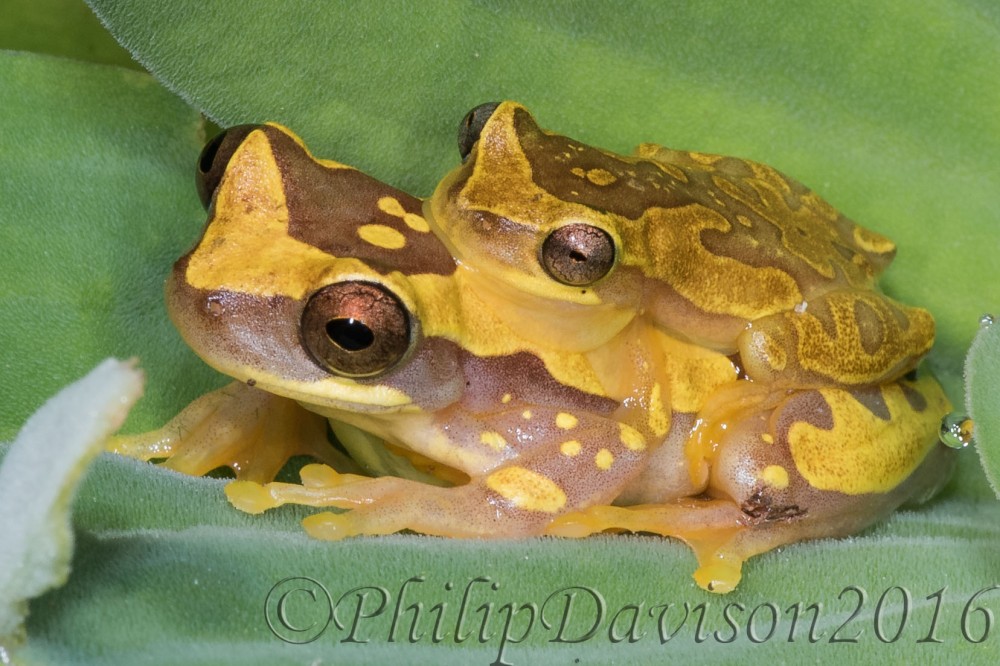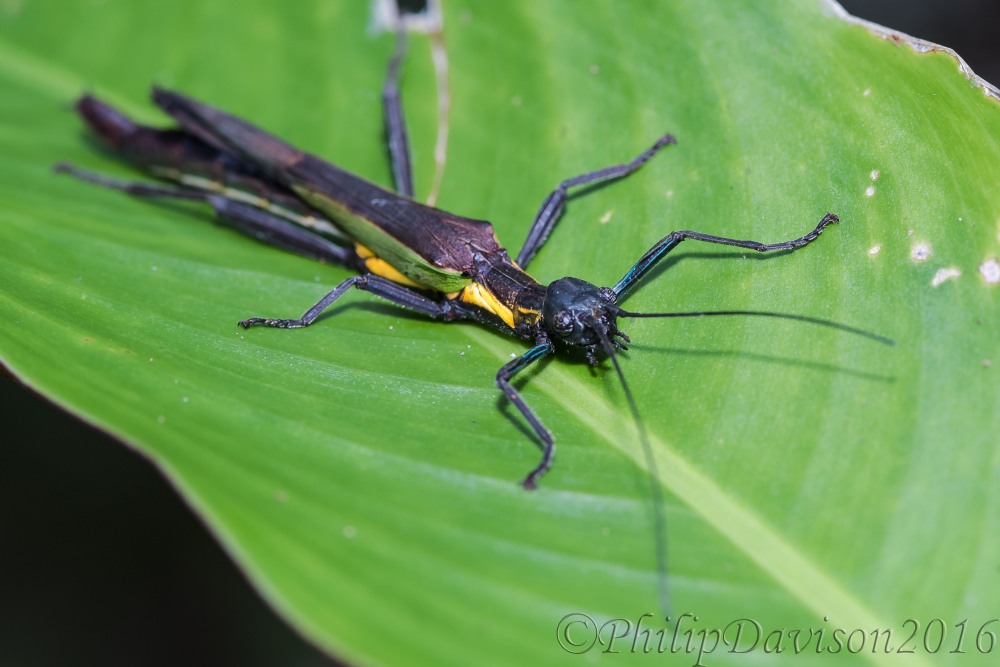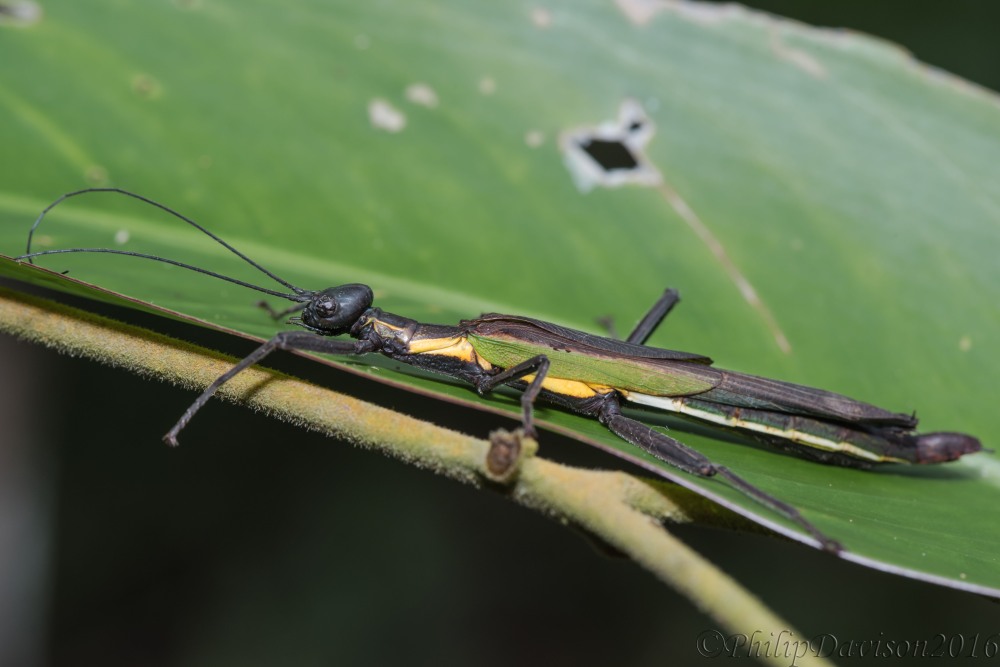
Sunny September
The clement weather conditions are continuing to prevail. The rain we are receiving is most certainly intense but by no means prolonged. If there is one day of rain it is being followed by two days of sun. This time of year there are very few visitors. September and October are not big holiday periods. For anyone who does want to visit Costa Rica at this time of year you can certainly avoid the crowds but you also run the risk of being confined to your cabin unless you want to suffer a constant soaking. For those of us who do live here then the quiet time and unseasonably dry and sunny conditions give us time to go and explore a little more or in my case catch up with the writing.
I’m Lichen That
One night when I was out doing my nightly frog counts I came across one of the Anolis lizards that I see more often up in the canopy, a Lichen Anole, (Anolis pentaprion). This individual was sleeping but when I turned the lights on to video the creature in its state of slumber the instant change from night to apparent day woke it. Not only did the lizard stir but the increase in light levels drew in some of the insects including one of the few species of night-flying wasps, Apoica pallida. It landed near the lizard’s head so presenting itself as an easy meal the advantage of which it was not going to refuse despite having only just being disturbed from its sleep. With a quick snap of the jaws the wasp was caught, chewed up and down the body and then swallowed. The Anolis then soporifically walked up the small branch on which it was clinging, climbed atop a leaf into a darker location than it was now finding itself, closed its eyes and went back to sleep.
Anolis lizards are a very diverse genus with many closely related genera belonging to the family: Polychrotidae. There are well over 200 species of Anolis and each species quite often is divided into a number of subspecies. Anolis lizards are similar to geckos in that they have an anatomically specialized structure to the toes, (lamellae), that allow then to climb with ease including smooth vertical walls and even panes of glass. Anolis lizards are generally small and unless you notice some movement as they jump through the vegetation then they can easily be overlooked. In terms of ecology smaller species inhabit the lower levels of the forest and conversely larger species the higher levels.

Lichen Anole
Although the family is species rich, it is not always easy to identify the individuals to species level. One factor that does help is the males have a loose flap of skin under the chin called a dewlap. Thankfully each species has a different color dewlap, particularly pronounced in this area. The loose skin is attached to a rod of cartilage fixed at the jaw over which the lizard has muscular control. The lowering of the cartilage extends the skin revealing the brightly colored flag which is in stark contrast to the more usual body color and it is used to intimidate and scare rival males from the territory or used to court females. Certainly if you see that bright flash of color appear as if from nowhere then there will be a second individual you may not be so aware of but it will be somewhere close by in the vicinity. The dewlap of the Lichen Anole is a deep purple edged with magenta and is not as large as in some other species. Most females do not possess a dewlap and because there is a strong sexual dimorphism can prove a little more difficult to identify. Here on the Osa Peninsula there are only seven species of Anole and they are all fairly distinct in appearance both male and females.
Many Moons
There are two particular species that seem to have reacted to this year’s slightly abnormal weather conditions. One is a butterfly and the other is a frog. They have both been recorded in numbers in excess of those normally found.
The Luna Satyr, (Pierella luna), is a largish brown butterfly that is normally found throughout the year but for the most part as solitary individuals or in small groups. It is found flying very close to the forest floor in the dark, dank, shady conditions beneath the forest canopy. You will quite often only notice it when it momentarily passes by your feet, wings beating slowly, as it moves from one side of the path to the other. It will disappear under the vegetation and when it settles the muted grays and browns of its now still wings blend it immediately into the background. It prefers the denser aspect of secondary forest as opposed to the more open situation beneath primary forest. This may have something to do with the distribution of its larval host plant, species in the family: Heliconiaceae, many of which can be found in secondary forest habitat.
This year when walking along trails through secondary forest Luna Satyr could be found in huge numbers much larger than experienced before. I am not sure what triggered the population explosion but the adults have not been hard to find, sometimes in groups numbering ten or more. The slightest disturbance caused by your footfall will have them momentarily take to the air before quickly alighting once more on the ground.

Luna Satyr
A Big Bunch
The Banana Frog, (Dendropsophus ebreccatus), is one of those small tree frogs that you can more or less guarantee you will see if you go to the pond at night. They are ever present throughout the year. At the height of the amphibian breeding season which starts when the rains arrive in April, gets into full swing in May and draws to a close by the end of August, the Banana Frog males can be both seen and heard in reasonably large numbers every night. Those numbers reduce outside of the breeding season to the point where during the dry season it might only be one forlorn male out calling but there will always be one.
The males emerge as the sun slowly sinks beneath the western horizon. They set up their territories on the Water Lettuce or Water Hyacinth and call vigorously with a protracted “Eeeack”. The larger egg bearing females emerge a little later, select a male on the quality of his call, makes her way over to the male of choice, they pair up and later she lays a sheet of small jelly coated eggs on the surface of a leaf which the male fertilizes. The eggs develop here for 7 or 8 days, the tadpoles wriggle free and slip below the surface of the water from where they will emerge about 8 weeks later as small froglets.
Whereas this time of year when all the other frog species have either disappeared from the breeding pond or are present in only small numbers, the Banana Frog has seen a surge in numbers. There are presently in the region of 20 calling males every evening. It could well be that they are taking advantage of the lack of competition from other species, although there are not too many other species that do use the Water lettuce, (Pistia stratiote), and Water Hyacinth, (Eichhornia crassipes). The tadpoles of other frogs do have to compete for space and food once they have entered the water, some of which may be larger and/or more voracious than D. ebreccatus tadpoles. It may simply be the fact that there is still a lot of rain which is perfect for the eggs but that is the norm every year. Whatever the reason if you could down to the pond at the minute after sunset you will be greeted by a vociferous chorus of amorous Banana Frogs.

Banana Frog
Seeing You Walk for the First Time
Last week I happened across an insect that has proved to be somewhat difficult to identify. What initially caught my eye were the colors, most strikingly the bright yellow. The head was small but the body was long and soft. The wings too were brightly colored but in green. My first thoughts were that it was some kind of Phasmid or Walking Stick, more precisely a winged walking stick. It did not seem to be disturbed when I moved it from the bare white stucco wall where its colors were making it rather conspicuous to some nearby vegetation where it was less obvious. Not moving is part of a Phasmids game plan though. I took some photos and headed off to my reference library.

Winged Walking Stick
As with most insects that I see for the first time after 16 years of living here I just know the identification is going to be difficult. Insects are so prohibitively numerous in number of species, especially tropical insects. The reference material available is limited and by no means exhaustive. So after some searching I was not really any further forward than still being confident it was a winged phasmid. Time to scour that great resource the internet. Scrutinizing photo after photo all I could conclude that it was a winged phasmid but there was nothing I could see that looked remotely like this individual. So if there are any phasmid experts that may be reading this and could enlighten me as to a genus or species I would love to hear from you.

Winged Walking Stick
Philip Davison is a biologist, writer and photographer based in Costa Rica.
Great stuff, Philip!
Sent from my iPhone
>
LikeLike
Thank you.
LikeLike